Rational Alloy Design of Niobium-Bearing HSLA Steels
Abstract
:1. Introduction
2. Research Rationale
2.1. Alloy Design Used in Study
2.2.1. Phase I: Theoretical Study
2.2.2. Phase II: Validation Study Based on Experiment
3. Materials and Methods
3.1. Experimental Materials
3.2. Studies of Grain Coarsening during Reheating
3.3. Hot Compression
3.4. Characterization Methods
4. Results and Discussion
4.1. As-Received Samples
4.2. Coarsening of Prior Austenite Grain Size
4.3. Rough Rolling Simulations
5. Conclusions
Author Contributions
Funding
Acknowledgments
Conflicts of Interest
References
- Beiser, C.A. The Effect of Small Columbium Additions to semi-killed Medium-Carbon Steels. ASM Preprint No. 138. In Proceedings of the Regional Technical Meeting, Buffalo, NY, USA, 17–19 August 1959. [Google Scholar]
- Stuart, H. Niobium-Proceedings of the International Symposium. Metallurgical Society of AIME: Warrendale, PA, USA, 1984. [Google Scholar]
- Hansen, S.; Vander Sande, J.; Cohen, M. Niobium carbonitride precipitation and austenite recrystallization in hot-rolled microalloyed steels. Metall. Trans. A 1980, 11, 387–402. [Google Scholar] [CrossRef]
- Cuddy, L. Microstructures developed during thermomechanical treatment of HSLA steels. Metall. Trans. A 1981, 12, 1313–1320. [Google Scholar] [CrossRef]
- Sobral, M.; Mei, P.; Kestenbach, H.-J. Effect of carbonitride particles formed in austenite on the strength of microalloyed steels. Mater. Sci. Eng. A 2004, 367, 317–321. [Google Scholar] [CrossRef]
- Vervynckt, S.; Verbeken, K.; Lopez, B.; Jonas, J.J. Modern HSLA steels and role of non-recrystallisation temperature. Int. Mater. Rev. 2012, 57, 187–207. [Google Scholar] [CrossRef]
- Priestner, R.; Hodgson, P. Ferrite grain coarsening during transformation of thermomechanically processed C–Mn–Nb austenite. Mater. Sci. Technol. 1992, 8, 849–854. [Google Scholar] [CrossRef]
- Miao, C.; Shang, C.; Zurob, H.; Zhang, G.; Subramanian, S. Recrystallization, precipitation behaviors, and refinement of austenite grains in high Mn, high Nb steel. Metall. Mater. Trans. A 2012, 43, 665–676. [Google Scholar] [CrossRef]
- Iron and Steel Institute of Japan. Proceedings of the Conference Thermec 88, Tokyo, Janpan 1988; Iron and Steel Institute of Japan: Tokyo, Janpan, 1988; Volume 1, pp. 330–336. [Google Scholar]
- Tanaka, T. Controlled rolling of steel plate and strip. Int. Met. Rev. 1981, 26, 185–212. [Google Scholar] [CrossRef]
- Shanmugam, S.; Misra, R.D.K.; Mannering, T.; Panda, D.; Jansto, S.G. Impact toughness and microstructure relationship in niobium-and vanadium-microalloyed steels processed with varied cooling rates to similar yield strength. Mater. Sci. Eng. A 2006, 437, 436–445. [Google Scholar] [CrossRef]
- Palmiere, E.J. Suppression of Recrystallization during the Hot Deformation of Microalloyed Austenite. Ph.D. Thesis, University of Pittsburgh, Pittsburgh, PA, USA, 1991. [Google Scholar]
- Watanabe, H.; Smith, Y.; Pehlke, R. Precipitation kinetics of niobium carbonitride in austenite of high-strength low-alloy steels. In The Hot Deformation of Austenite; TMS-AIME: New York, NY, USA, 1977; pp. 140–168. [Google Scholar]
- Rajinikanth, V.; Kumar, T.; Mahato, B.; Chowdhury, S.G.; Sangal, S. Effect of Strain-Induced Precipitation on the Austenite Non-recrystallization (Tnr) Behavior of a High Niobium Microalloyed Steel. Metall. Mater. Trans. A 2019, 50, 5816–5838. [Google Scholar] [CrossRef]
- Palmiere, E.J.; Garcia, C.I.; DeArdo, A.J. The influence of niobium supersaturation in austenite on the static recrystallization behavior of low carbon microalloyed steels. Metall. Mater. Trans. A 1996, 27, 951–960. [Google Scholar] [CrossRef]
- Koo, J.Y.; Luton, M.J.; Bangaru, N.V.; Petkovic, R.A.; Fairchild, D.P.; Petersen, C.W. Metallurgical design of ultra high-strength steels for gas pipelines. Int. J. Offshore Pol. Eng. 2004, 14, 2–10. [Google Scholar]
- Graf, M.K.; Hillenbrand, H.G.; Peters, P. Accelerated Cooling of Steel; TMS-AIME: Warrendale, PA, USA, 1986; pp. 165–179. [Google Scholar]
- Cuddy, L. The Effect of Microalloy Concentration on the Recrystallisation of Austenite During Hot Deformation. In Thermomechanical Processing of Microalloyed Austenite; AIME: Pittsburgh, PA, USA, 1981; pp. 129–140. [Google Scholar]
- Kozasu, I.; Ouchi, C.; Sampei, T.; Okita, T. Hot rolling as a high-temperature thermo-mechanical process. In Proceedings of the Conference on Microalloying 75; Union Carbide Corp.: New York, NY, USA, 1977; pp. 120–135. [Google Scholar]
- Palmiere, E.J.; Garcia, C.I.; DeArdo, A.J. Compositional and microstructural changes which attend reheating and grain coarsening in steels containing niobium. Metall. Mater. Trans. A 1994, 25, 277–286. [Google Scholar] [CrossRef]
- Murr, L.E. Interfacial Phenomena in Metals and Alloys; Advanced Book Program, Reading, Mass; Addison-Wesley Pub. Co.: New York, MA, USA, 1974. [Google Scholar]
- Danieli, C. Start up Model for a Five Meter Plate Mill; Private Communication: SpA. Buttrio (UD), Italy, 2010. [Google Scholar]
- Gladman, T. On the theory of the effect of precipitate particles on grain growth in metals. Proc. R. Soc. Lond. A 1966, 294, 298–309. [Google Scholar]
- Palmiere, E.J.; Garcia, C.I.; DeArdo, A.J. The influence of niobium supersaturation in austenite on the static recrystallization behavior of low carbon microalloyed steels. Metall. Mater. Trans. A 1996, 27, 951–960. [Google Scholar] [CrossRef]
- Kwon, O.; DeArdo, A.J. Interactions between recrystallization and precipitation in hot-deformed microalloyed steels. Acta Metall. Mater. 1991, 39, 529–538. [Google Scholar] [CrossRef]
- Cuddy, L.; Raley, J. Austenite grain coarsening in microalloyed steels. Metall. Trans. A 1983, 14, 1989–1995. [Google Scholar] [CrossRef]
- Fernández, J.; Illescas, S.; Guilemany, J.M. Effect of microalloying elements on the austenitic grain growth in a low carbon HSLA steel. Mater. Lett. 2007, 61, 2389–2392. [Google Scholar] [CrossRef]
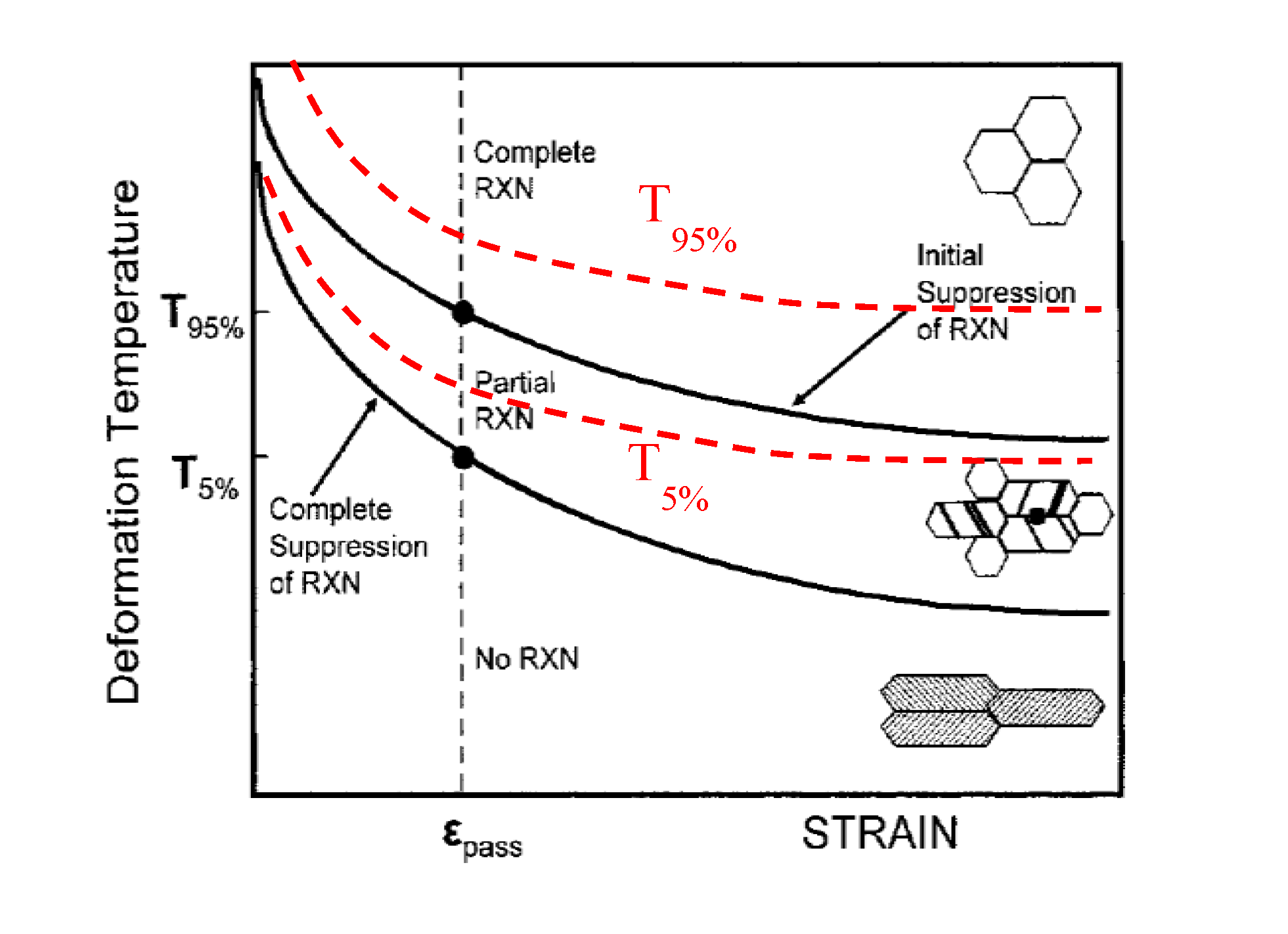

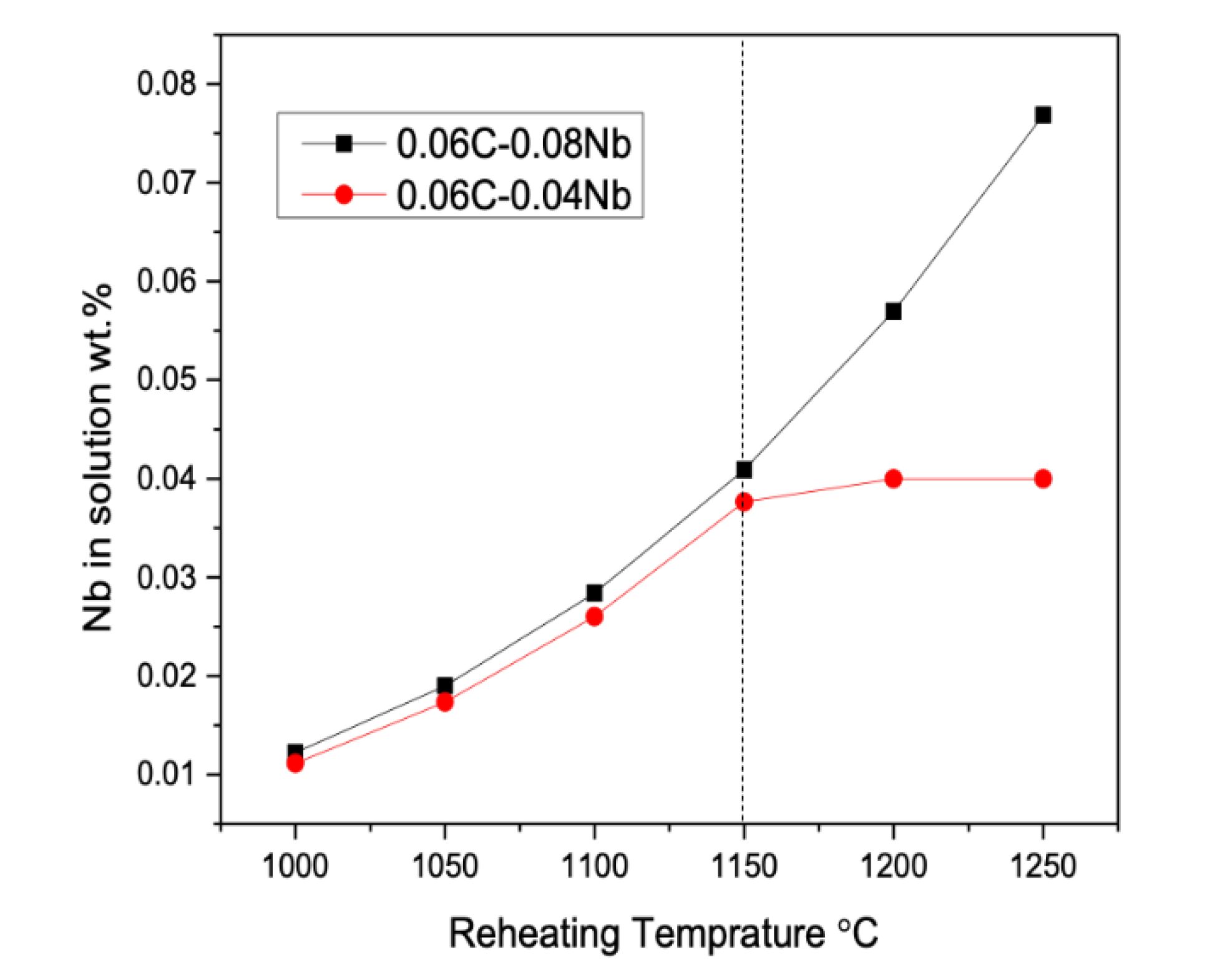
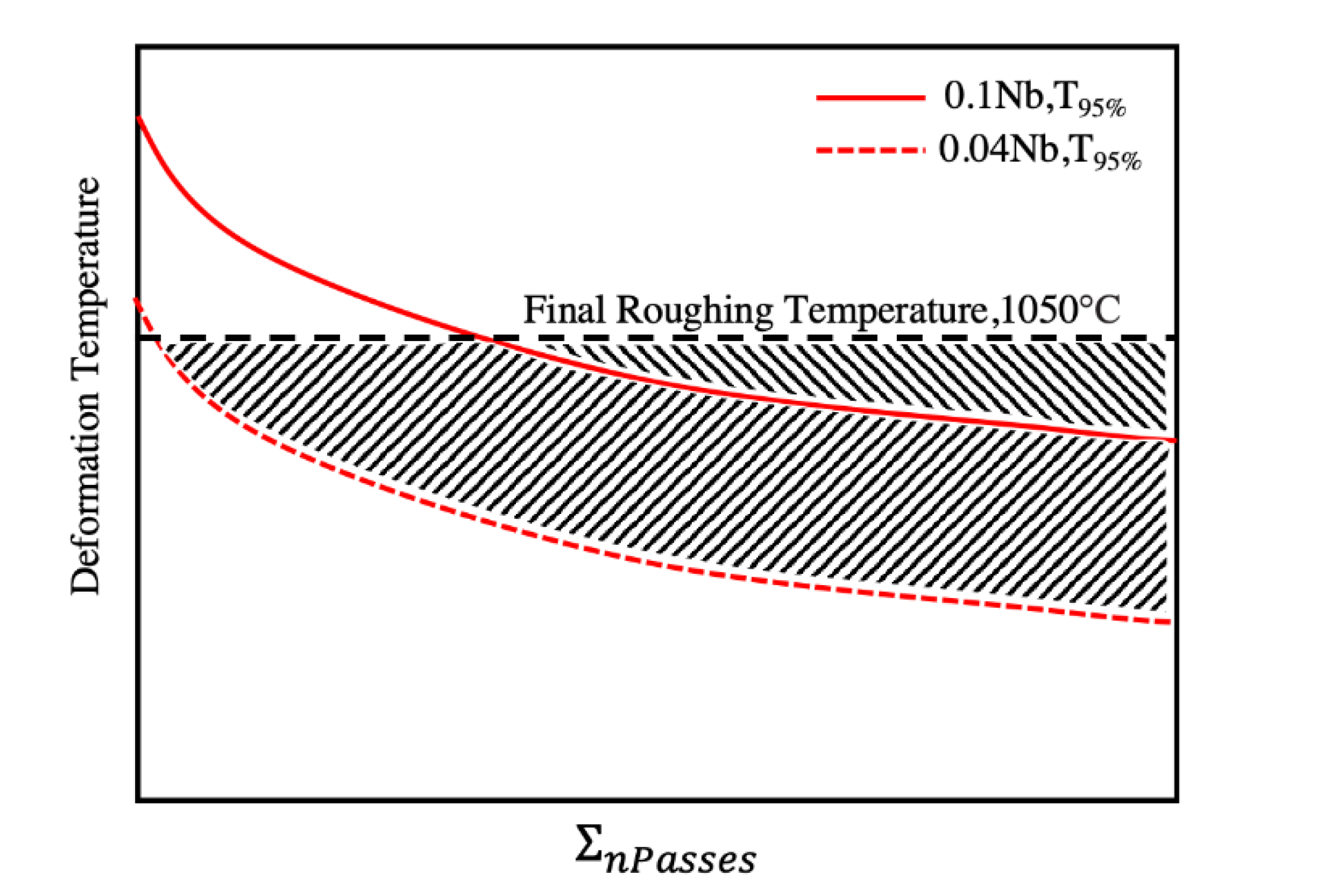
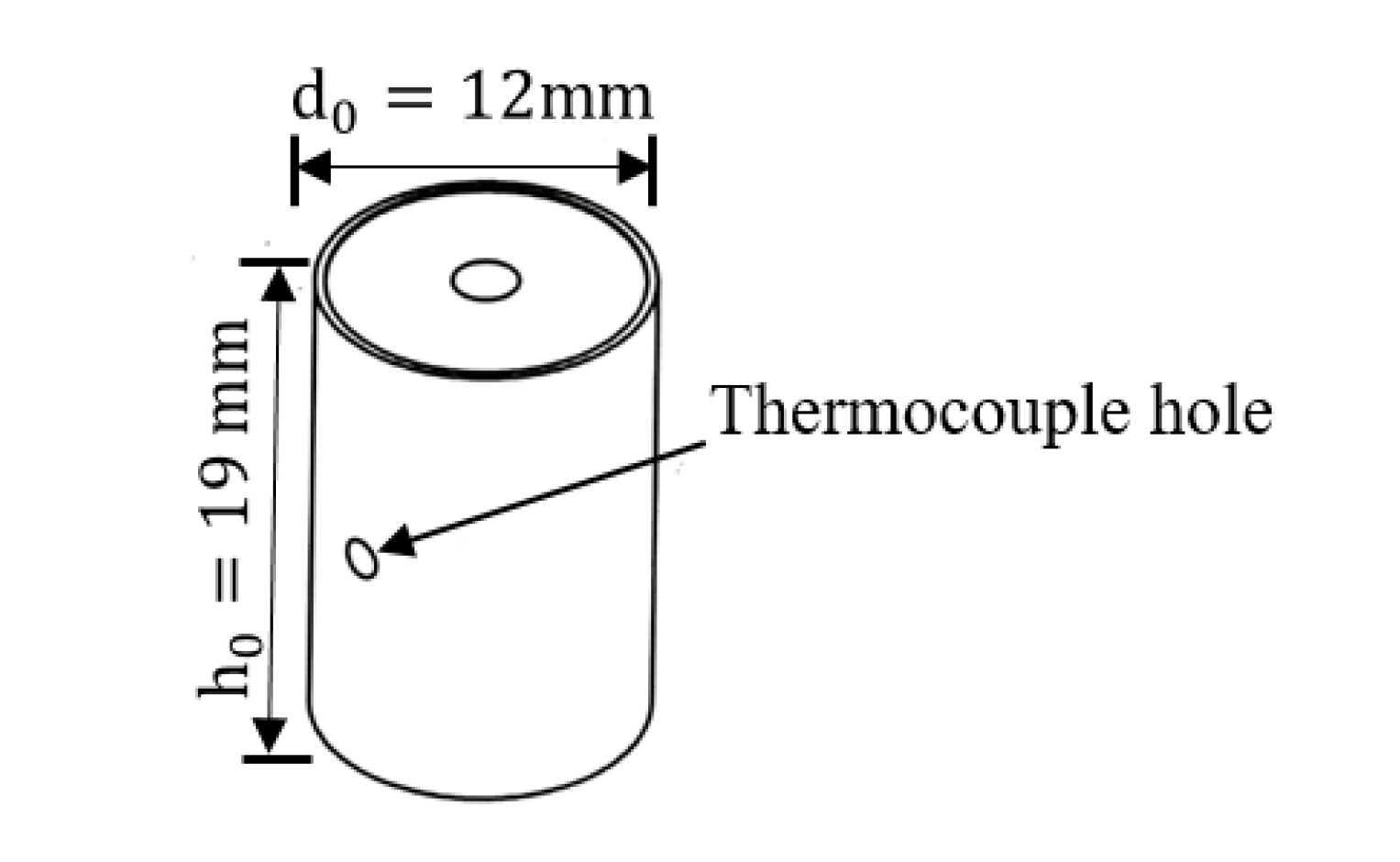





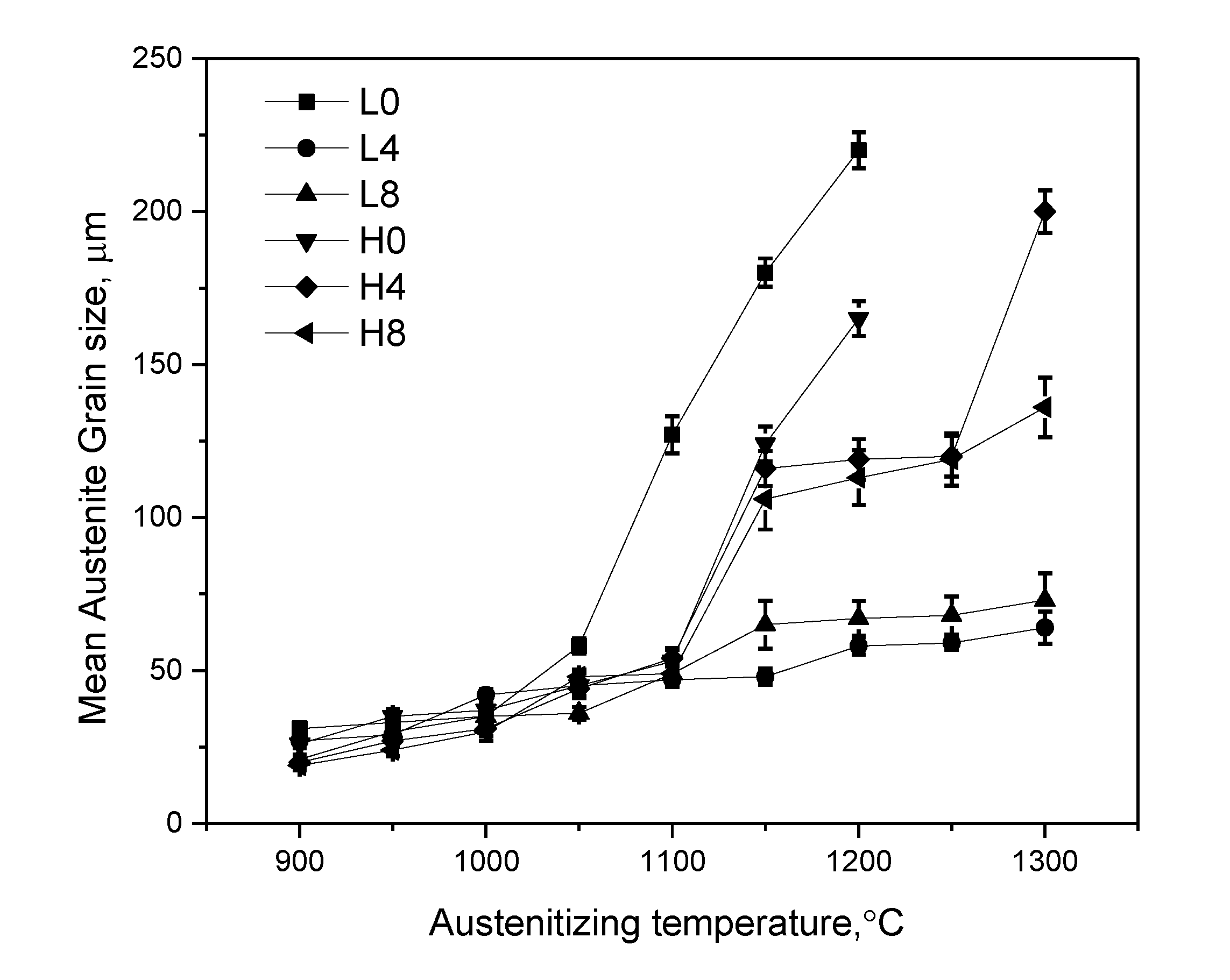

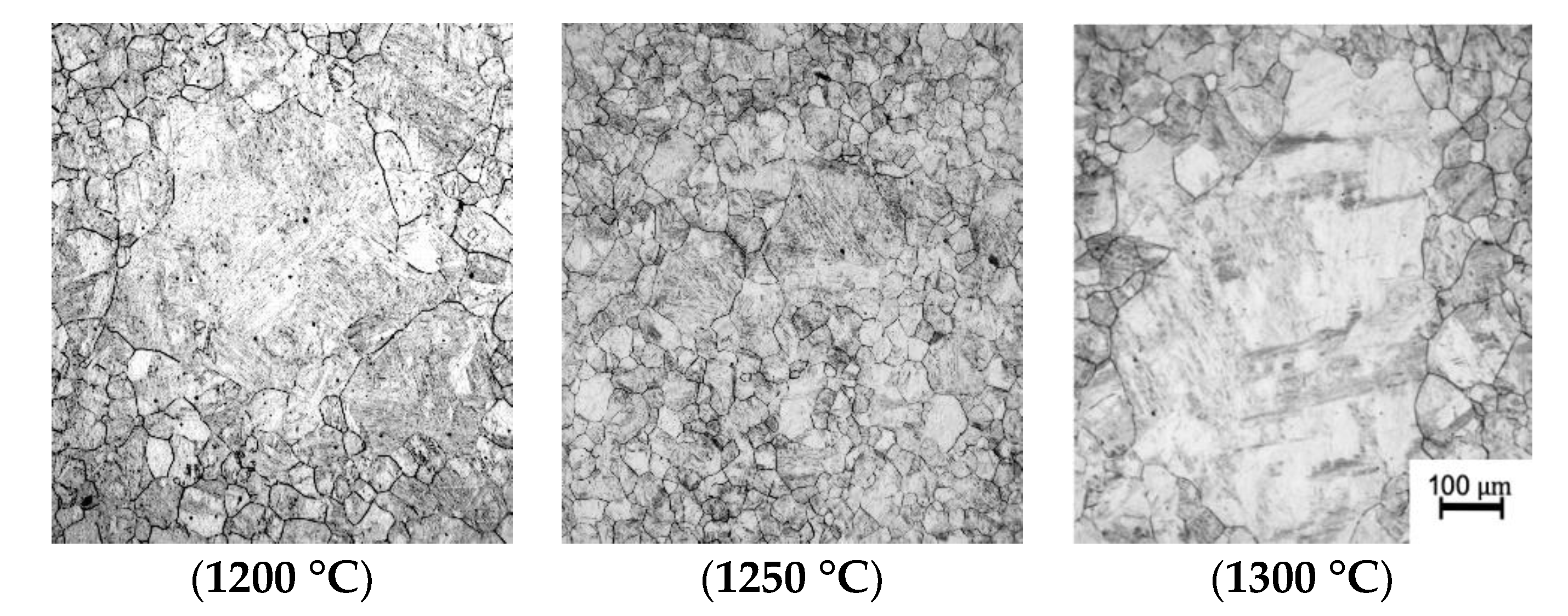




| Deformation Temperature, °C | 0.06C,0.08Nb | 0.06C,0.04Nb |
|---|---|---|
| 1150 | 27.5 | 3.4 |
| 1100 | 35.4 | 10.7 |
| 1050 | 41.0 | 17.0 |
| Alloy | C | Nb | Base |
|---|---|---|---|
| L0 | 0.032 | - | 1.88Mn-0.01P-0.002S-0.30Si-0.20Cu-0.20N-0.50Cr-0.10Mo-0.0145Ti-0.030Al-0.004N |
| L4 | 0.031 | 0.0429 | |
| L8 | 0.029 | 0.0837 | |
| H0 | 0.061 | - | |
| H4 | 0.062 | 0.0413 | |
| H8 | 0.059 | 0.07827 |
© 2020 by the authors. Licensee MDPI, Basel, Switzerland. This article is an open access article distributed under the terms and conditions of the Creative Commons Attribution (CC BY) license (http://creativecommons.org/licenses/by/4.0/).
Share and Cite
Almatani, R.A.; DeArdo, A.J. Rational Alloy Design of Niobium-Bearing HSLA Steels. Metals 2020, 10, 413. https://doi.org/10.3390/met10030413
Almatani RA, DeArdo AJ. Rational Alloy Design of Niobium-Bearing HSLA Steels. Metals. 2020; 10(3):413. https://doi.org/10.3390/met10030413
Chicago/Turabian StyleAlmatani, Rami A., and Anthony J. DeArdo. 2020. "Rational Alloy Design of Niobium-Bearing HSLA Steels" Metals 10, no. 3: 413. https://doi.org/10.3390/met10030413





